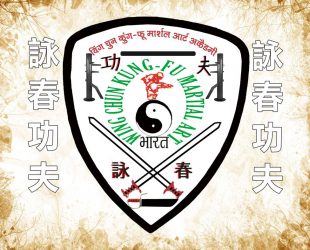Martial arts have long captivated practitioners and spectators alike with their beauty, discipline, and deadly effectiveness. From ancient techniques passed down through generations to modern combat systems refined for self-defense, the world of martial arts is diverse and rich. However, among the myriad styles, there exist those that are renowned for their lethal efficiency and effectiveness in combat. In this article, we delve into some of the deadliest martial arts in the world.
1. **Krav Maga**:
Originating in Israel, Krav Maga is a self-defense system developed for the Israel Defense Forces. What sets Krav Maga apart is its focus on real-world situations and its emphasis on neutralizing threats quickly and decisively. Practitioners are trained to target vulnerable points on the body, such as the eyes, throat, and groin, with strikes and techniques designed to incapacitate opponents rapidly. Its no-nonsense approach and brutal efficiency make it one of the deadliest martial arts in the world.
2. **Muay Thai**:
Hailing from Thailand, Muay Thai is often referred to as the “art of eight limbs” due to its use of fists, elbows, knees, and shins. Known for its devastating strikes and powerful clinch techniques, Muay Thai is a formidable martial art both in the ring and in real-world confrontations. Fighters are trained to deliver bone-crushing blows with precision and to endure significant punishment, making it a lethal combat style favored by many professional fighters and military personnel worldwide.
3. **Silat**:
Silat is a collective term for various Southeast Asian martial arts practiced primarily in Indonesia, Malaysia, and Brunei. Characterized by its fluid movements, deceptive techniques, and emphasis on close-quarters combat, Silat is as deadly as it is elegant. Practitioners are trained to use strikes, joint locks, and throws to incapacitate opponents swiftly, often employing weapons such as knives, sticks, and sarongs in their training. With its focus on adaptability and improvisation, Silat remains a formidable martial art with a rich history of combat effectiveness.
4. **Brazilian Jiu-Jitsu** (BJJ):
Developed from traditional Japanese Jiu-Jitsu, Brazilian Jiu-Jitsu is a grappling-based martial art that focuses on ground fighting and submission techniques. What makes BJJ particularly deadly is its effectiveness against larger and stronger opponents through the use of leverage, joint locks, and chokeholds. By neutralizing an opponent’s strength and mobility, BJJ practitioners can control and submit adversaries with minimal effort, making it a valuable skill for self-defense and combat sports alike.
5. **Kali/Eskrima/Arnis**:
Originating in the Philippines, Kali, also known as Eskrima or Arnis, is a weapons-based martial art that emphasizes the use of sticks, knives, and improvised weapons for combat. Practitioners are trained in both armed and unarmed combat, learning to seamlessly transition between weapon and empty-hand techniques. With its emphasis on practicality and adaptability, Kali is a lethal martial art that remains relevant in modern self-defense and military training.
While these martial arts are undoubtedly effective in combat, it’s essential to remember that their lethality is only as good as the practitioner’s skill and intent. Responsible training and ethical conduct are paramount in the practice of any martial art, as the ultimate goal should always be self-defense and personal growth rather than inflicting harm on others. As such, while these martial arts may be deadly, their true value lies in their ability to empower individuals and promote discipline, respect, and humility.

